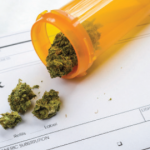“Physicians should be aware that adolescents with chronic illnesses are using alcohol and other substances (they are not immune),” Dr. Weitzman concluded. “And, when they do, they are at considerably elevated risk for treatment nonadherence, which is a key predictor of poor disease outcomes. We strongly recommend screening these youth for alcohol and other substance use, and there are many excellent tools out there for structured screening.”
Kenneth Lee, from the University of California, Irvine, is a social science researcher who examines the links between education and health. He told Reuters Health by email, “From a social science researcher’s perspective, I would have liked to see if these findings hold up with a larger sample size, a longitudinal design, and more rigorous statistical methods that would reduce bias and take steps toward causality.”
“The more pressing issue for these adolescents is not a form of intervention but rather prevention—understanding where, when, and with whom adolescents are participating in substance use,” Lee said.
“My recently published paper shows that substance use in mid to late adolescence is strongly associated with different out-of-school time contexts and in particular, unsupervised time with peers. It is perhaps possible that reducing unsupervised time with peers in the out-of-school time environment may have positive impacts in reducing substance use,” he said.
The National Institutes of Health funded this study. The authors reported no disclosures.


